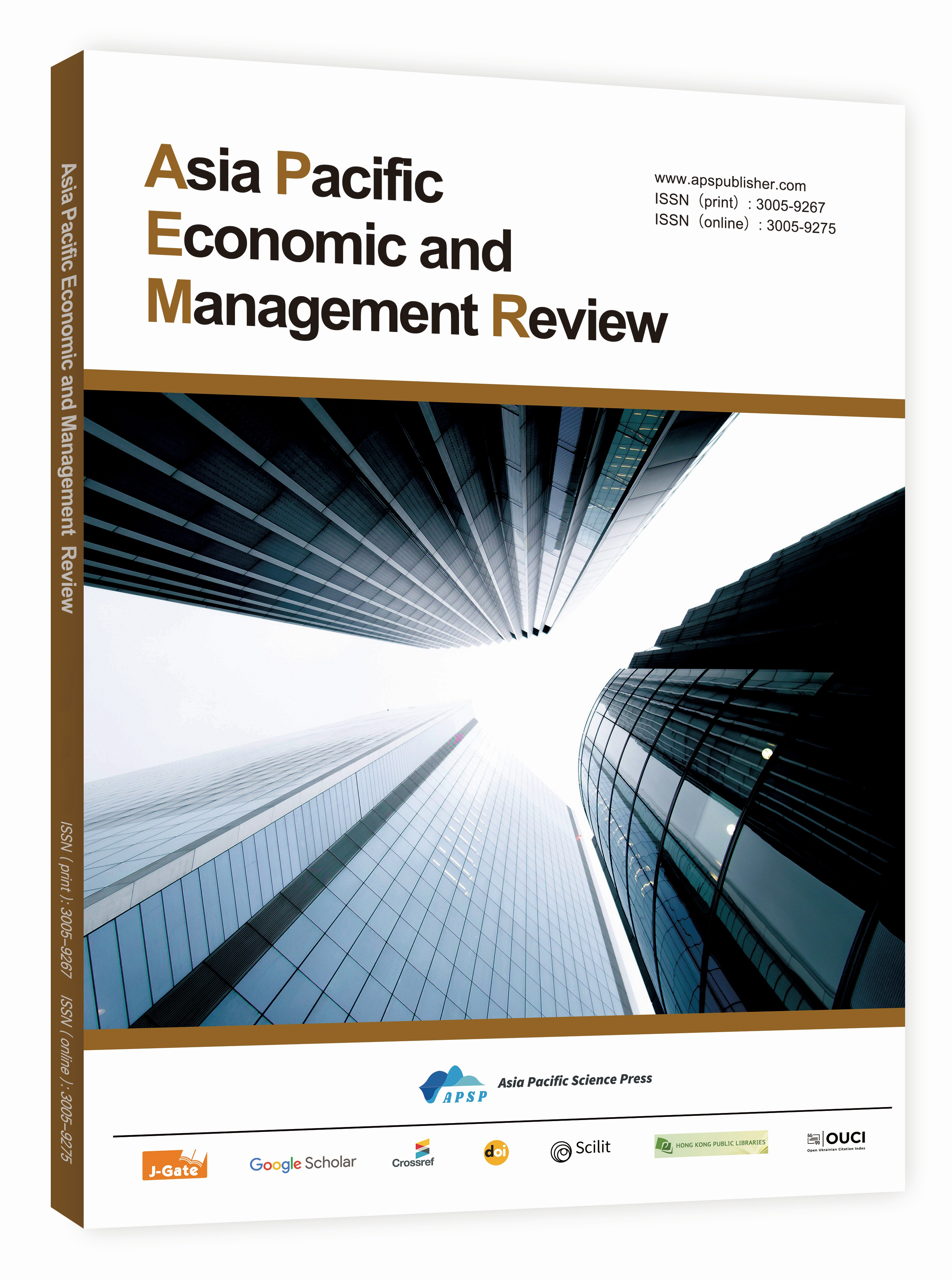Deep Learning for Stock Performance Prediction: A Sharpe Ratio-Optimized Approach
DOI:
https://doi.org/10.62177/apemr.v2i2.210Keywords:
Stock Performance Prediction, Deep Learning, Sharpe Ratio Optimization, Risk-Aware Forecasting, Portfolio Management, Reinforcement LearningAbstract
Accurate stock performance prediction is critical for portfolio management, risk assessment, and algorithmic trading. Traditional forecasting models often focus on minimizing prediction error but fail to consider risk-adjusted returns, making them suboptimal for real-world investment applications. Recent advances in deep learning have significantly improved financial time series forecasting, yet existing models primarily optimize for accuracy rather than maximizing risk-adjusted performance metrics such as the Sharpe ratio.
This study proposes a Sharpe ratio-optimized deep learning framework for stock performance prediction, integrating risk-sensitive forecasting mechanisms directly into model training. By embedding Sharpe ratio-based loss functions, the model prioritizes investment strategies that yield higher returns per unit of risk. The framework utilizes temporal convolutional networks (TCNs) and attention-based transformers, allowing for both short-term price trend detection and long-range dependency modeling. Additionally, reinforcement learning is employed to dynamically adjust portfolio allocation strategies based on evolving market conditions, ensuring adaptability across different asset classes.
Empirical results on real-world stock market datasets demonstrate that the proposed model outperforms traditional forecasting approaches in both predictive accuracy and financial performance. The study highlights the importance of integrating risk-sensitive optimization techniques within deep learning-based stock prediction frameworks, offering a more practical and scalable solution for quantitative investment strategies.
Downloads
References
Zhang Y. Integrating Forecasting and Mean-Variance Portfolio Optimization: A Machine Learning Approach[J]. Advances in Economics, Management and Political Sciences, 2024, 90: 157-168.
Drahokoupil J. Application of the XGBoost algorithm and Bayesian optimization for the Bitcoin price prediction during the COVID-19 period[J]. FFA Working Papers, 2022.
Tang X, Xu S, Ye H. The way to invest: trading strategies based on ARIMA and investor personality[J]. Symmetry, 2022, 14(11): 2292.
Chen D, Tong G, Wang Z, et al. Consolidating Joint Predictability of Firm Characteristics in Chinese Stock Market: A Subset Combination Approach[J]. Available at SSRN 4255551, 2023.
Reintjes T. Automatic Identification and Classification of Share Buybacks and their Effect on Short-, Mid-and Long-Term Returns[J]. arXiv preprint arXiv:2209.12863, 2022.
Alt J. ESG Momentum Strategy in the Nordic stock market: Cross-Asset Strategy: Nordic ESG Equities, Commodity Pairs Trading and FX Insights[D]. Universidade NOVA de Lisboa (Portugal), 2023.
Wolko S. Best-in-Class ESG Investment Strategy in the Nordic Stock Market[D]. Universidade NOVA de Lisboa (Portugal), 2023.
Kaczmarek T, Pukthuanthong K. Just look: Knowing peers with image representation[J]. Available at SSRN 4934624, 2024.
Fiane C P, Juell T A, Pørksen L S. Exploring the Diversification Benefits of Frontier Markets in Global Portfolios[J].
Roy G. Multi-timeframe algorithmic trading bots using thick data heuristics with deep reinforcement learning[D]. , 2022.
Mozaffari L. Stock Market Time Series Forecasting using Transformer Models[D]. Oslo Metropolitan University, 2024.
Olorunnimbe M K. Temporal deep learning for financial time series[D]. Université d'Ottawa| University of Ottawa, 2024.
Mishra A K, Renganathan J, Gupta A. Volatility forecasting and assessing risk of financial markets using multi-transformer neural network based architecture[J]. Engineering Applications of Artificial Intelligence, 2024, 133: 108223.
Han, X., Yang, Y., Chen, J., Wang, M., & Zhou, M. (2025). Symmetry-Aware Credit Risk Modeling: A Deep Learning Framework Exploiting Financial Data Balance and Invariance. Symmetry, 17(3), 341.
Yang, J., Li, P., Cui, Y., Han, X., & Zhou, M. (2025). Multi-Sensor Temporal Fusion Transformer for Stock Performance Prediction: An Adaptive Sharpe Ratio Approach. Sensors, 25(3), 976.
Ramos-Pérez E, Alonso-González P J, Núñez-Velázquez J J. Multi-transformer: A new neural network-based architecture for forecasting S&P volatility[J]. Mathematics, 2021, 9(15): 1794.
Hiransha, M. E. A. G., Gopalakrishnan, E. A., Menon, V. K., & Soman, K. P. (2018). NSE stock market prediction using deep-learning models. Procedia computer science, 132, 1351-1362.
Hossain, M. A., Karim, R., Thulasiram, R., Bruce, N. D., & Wang, Y. (2018, November). Hybrid deep learning model for stock price prediction. In 2018 ieee symposium series on computational intelligence (ssci) (pp. 1837-1844). IEEE.
Vargas, M. R., De Lima, B. S., & Evsukoff, A. G. (2017, June). Deep learning for stock market prediction from financial news articles. In 2017 IEEE international conference on computational intelligence and virtual environments for measurement systems and applications (CIVEMSA) (pp. 60-65). IEEE.
Agrawal, M., Shukla, P. K., Nair, R., Nayyar, A., & Masud, M. (2022). Stock prediction based on technical indicators using deep learning model. Computers, Materials & Continua, 70(1).
Rezaei, H., Faaljou, H., & Mansourfar, G. (2021). Stock price prediction using deep learning and frequency decomposition. Expert Systems with Applications, 169, 114332.
Mehtab, S., Sen, J., & Dutta, A. (2020, October). Stock price prediction using machine learning and LSTM-based deep learning models. In Symposium on machine learning and metaheuristics algorithms, and applications (pp. 88-106). Singapore: Springer Singapore.
Eapen, J., Bein, D., & Verma, A. (2019, January). Novel deep learning model with CNN and bi-directional LSTM for improved stock market index prediction. In 2019 IEEE 9th annual computing and communication workshop and conference (CCWC) (pp. 0264-0270). IEEE.
Soni, P., Tewari, Y., & Krishnan, D. (2022). Machine Learning approaches in stock price prediction: A systematic review. In Journal of Physics: Conference Series (Vol. 2161, No. 1, p. 012065). IOP Publishing.
Guo, H., Ma, Z., Chen, X., Wang, X., Xu, J., & Zheng, Y. (2024). Generating artistic portraits from face photos with feature disentanglement and reconstruction. Electronics, 13(5), 955.
Wang, X., Wu, Y. C., Zhou, M., & Fu, H. (2024). Beyond surveillance: privacy, ethics, and regulations in face recognition technology. Frontiers in big data, 7, 1337465.
Kyoung-Sook, M. O. O. N., & Hongjoong, K. I. M. (2019). Performance of deep learning in prediction of stock market volatility. Economic Computation & Economic Cybernetics Studies & Research, 53(2).
Fazeli, A., & Houghten, S. (2019, December). Deep learning for the prediction of stock market trends. In 2019 IEEE International Conference on Big Data (Big Data) (pp. 5513-5521). IEEE.
Cui, Y., Han, X., Chen, J., Zhang, X., Yang, J., & Zhang, X. (2025). FraudGNN-RL: A Graph Neural Network With Reinforcement Learning for Adaptive Financial Fraud Detection. IEEE Open Journal of the Computer Society.
Mehtab, S., & Sen, J. (2020). A time series analysis-based stock price prediction using machine learning and deep learning models. International Journal of Business Forecasting and Marketing Intelligence, 6(4), 272-335.
Wang, X., Wu, Y. C., & Ma, Z. (2024). Blockchain in the courtroom: exploring its evidentiary significance and procedural implications in US judicial processes. Frontiers in Blockchain, 7, 1306058.
Kanwal, A., Lau, M. F., Ng, S. P., Sim, K. Y., & Chandrasekaran, S. (2022). BiCuDNNLSTM-1dCNN-A hybrid deep learning-based predictive model for stock price prediction. Expert Systems with Applications, 202, 117123.
Sunny, M. A. I., Maswood, M. M. S., & Alharbi, A. G. (2020, October). Deep learning-based stock price prediction using LSTM and bi-directional LSTM model. In 2020 2nd novel intelligent and leading emerging sciences conference (NILES) (pp. 87-92). IEEE.
Liang, Y., Wang, X., Wu, Y. C., Fu, H., & Zhou, M. (2023). A study on blockchain sandwich attack strategies based on mechanism design game theory. Electronics, 12(21), 4417.
Yang, J., Li, P., Cui, Y., Han, X., & Zhou, M. (2025). Multi-Sensor Temporal Fusion Transformer for Stock Performance Prediction: An Adaptive Sharpe Ratio Approach. Sensors, 25(3), 976.
Singh, R., & Srivastava, S. (2017). Stock prediction using deep learning. Multimedia Tools and Applications, 76, 18569-18584.
Shah, J., Vaidya, D., & Shah, M. (2022). A comprehensive review on multiple hybrid deep learning approaches for stock prediction. Intelligent Systems with Applications, 16, 200111.
Nabipour, M., Nayyeri, P., Jabani, H., Mosavi, A., Salwana, E., & S, S. (2020). Deep learning for stock market prediction. Entropy, 22(8), 840.
Khare, K., Darekar, O., Gupta, P., & Attar, V. Z. (2017, May). Short term stock price prediction using deep learning. In 2017 2nd IEEE international conference on recent trends in electronics, information & communication technology (RTEICT) (pp. 482-486). IEEE.
Lee, Z., Wu, Y. C., & Wang, X. (2023, October). Automated Machine Learning in Waste Classification: A Revolutionary Approach to Efficiency and Accuracy. In Proceedings of the 2023 12th International Conference on Computing and Pattern Recognition (pp. 299-303).
Sonkavde, G., Dharrao, D. S., Bongale, A. M., Deokate, S. T., Doreswamy, D., & Bhat, S. K. (2023). Forecasting stock market prices using machine learning and deep learning models: A systematic review, performance analysis and discussion of implications. International Journal of Financial Studies, 11(3), 94.
Nabipour, M., Nayyeri, P., Jabani, H., Shahab, S., & Mosavi, A. (2020). Predicting stock market trends using machine learning and deep learning algorithms via continuous and binary data; a comparative analysis. Ieee Access, 8, 150199-150212.
Shahi, T. B., Shrestha, A., Neupane, A., & Guo, W. (2020). Stock price forecasting with deep learning: A comparative study. Mathematics, 8(9), 1441.
Li, X., Wang, X., Chen, X., Lu, Y., Fu, H., & Wu, Y. C. (2024). Unlabeled data selection for active learning in image classification. Scientific Reports, 14(1), 424.
Liu, Y., Wu, Y. C., Fu, H., Guo, W. Y., & Wang, X. (2023). Digital intervention in improving the outcomes of mental health among LGBTQ+ youth: a systematic review. Frontiers in psychology, 14, 1242928.
Downloads
How to Cite
Issue
Section
License
Copyright (c) 2025 Markus Schäfer, Thomas Müller, Hugo Fernandez

This work is licensed under a Creative Commons Attribution-NonCommercial 4.0 International License.

















